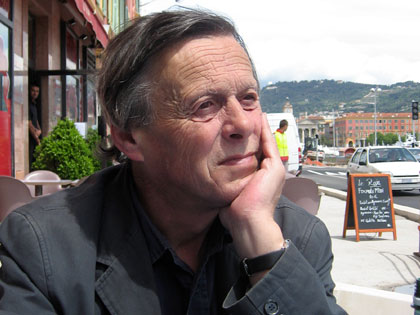Irish Independent, November 10, 2012
Now in its fifth edition, David Thomson’s Biographical Dictionary of Film has long been an indispensable bible for people who love to read and think about the movies. And an idiosyncratic one, too, because, despite its dull title and dictionary format, it’s a book crammed with shrewd insights, eloquent enthusiasms and withering putdowns.
However, in its latest incarnation a despairing note can also be detected as Thomson contemplates the lowered ambitions and coarsened quality of so many recent mainstream movies and voices his fears about the future of the medium to which he’s devoted his writing life.
That sense of dismay is even more pronounced in The Big Screen. Indeed, his feeling that the age of cinema as he loved it has actually come to an end can be gleaned from the book’s subtitle, in which the notion of movies having the capacity to influence our lives is framed in the past tense.
As for the actual screens onto which this movie-mad Londoner projected his youthful desires and fantasies, “they were big once, as large as buildings, and now they may be thumbnail size”. And so he offers this latest book as a history of cinema, though one in which “proper celebration is mixed with scepticism and some regret” – the regret stemming from his feeling that “moviegoing does not quite exist anymore as a consuming public preoccupation”.
New technologies have much to do with that, enabling us to watch movies on our iPhones or iPads or laptops or “on demand” through our television sets, leading Thomson to protest that “whatever one’s view of The Tree of Life, surely its eye deserves a large screen”. And so when he learns that a teenager of his acquaintance is constantly watching Terrence Malick’s film on his computer, he concludes that “he and I are not quite of the same species”.
Thomson belongs to the species for whom cinema was the most thrilling art form of the 20th century and his heroes include such diverse practitioners as Ernest Lubitch, Howard Hawks, Jean Renoir, Alfred Hitchcock, Cary Grant, Robert Mitchum and Angie Dickinson.
There are villains, too. Indeed, his view is that the rot began to set in during the Seventies with the release of two films, Steven Spielberg’s Jaws and George Lucas’s Star Wars, whose huge popularity would dictate mainstream cinema’s relentless trend towards empty spectacle, mechanical thrills and disdain for basic humanity.
And he casts a disenchanted eye on the subsequent influence of Quentin Tarantino, whose brilliance he acknowledges but who became an instant hero for a generation who “think it’s fatuous for a film to seek their emotional involvement or for its story to be sincere or dramatic”.
Most of this beautifully written book, though, concerns the history of cinema he loves and he writes about it with lightly-worn scholarship and unmistakeable passion. Indeed, his anecdotes and insights will make you want to look immediately again at masterpieces by Welles, Renoir, Hitchcock, Fellini, Altman, Boorman or whoever – though probably on DVD or Netflix and not on the big screen for which they were intended.
